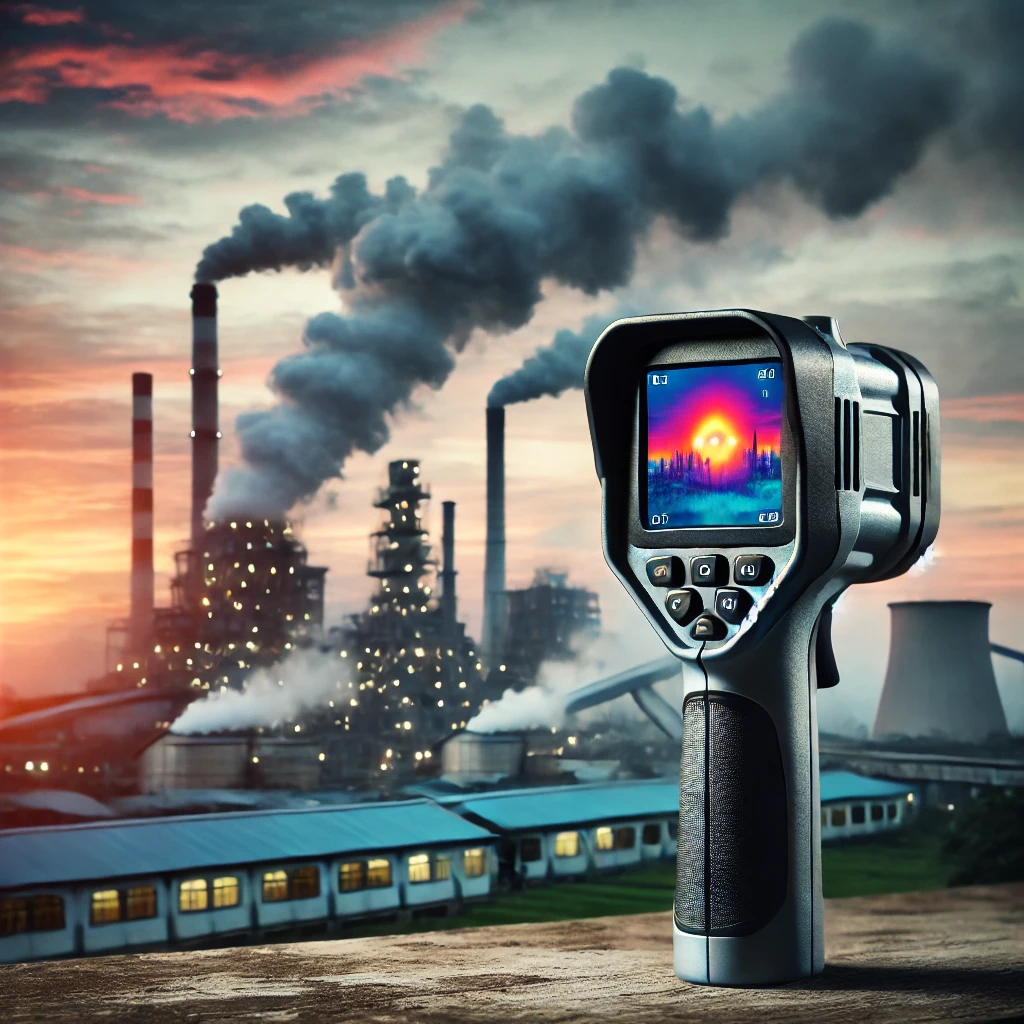Non-Contact Temperature Control as a Key to Reducing CO₂ Emissions
Non-Contact Temperature Control has become a vital strategy in reducing CO₂ (carbon dioxide) emissions, especially as global industries face growing pressure to adopt sustainable and energy-efficient practices. One essential tool in achieving this goal is the pyrometer, which accurately measures high temperatures without physical contact. This essay explores how using pyrometers contributes to lowering CO₂ emissions through improved thermal efficiency, enhanced process control, and reduced energy consumption.

Understanding Pyrometers
A pyrometer detects the infrared radiation emitted by an object, allowing for precise temperature measurements. This capability is crucial in various industrial processes, including metalworking, glass production, and power generation. By providing real-time temperature data, pyrometers enable operators to monitor and control processes more effectively.
Enhancing Efficiency and Reducing Waste
One primary way pyrometers help reduce CO2 emissions is through enhanced process efficiency. Maintaining optimal temperatures is critical for maximizing output and minimizing waste in many industrial applications. For example, precise temperature control in metal fabrication can prevent overheating, save materials, and reduce the energy required to maintain those temperatures.
Companies can significantly lower their energy consumption by using pyrometers to ensure that processes operate at their most efficient temperatures. Since energy production is a major source of CO2 emissions, any reduction in energy use directly correlates with lower emissions.
Process Control and Optimization
Furthermore, pyrometers contribute to improved process control. Maintaining the right temperature during calcination is crucial in industries such as cement production. Any deviation can lead to inefficiencies, increasing fuel consumption and, consequently, higher CO2 emissions. With pyrometers providing real-time feedback, operator can immediately adjust to maintain optimal conditions, reducing excess fuel and energy needs. Additionally, pyrometers facilitate the implementation of predictive maintenance strategies. By monitoring temperature trends, companies can identify potential equipment failures before they occur. This proactive approach reduces downtime and ensures equipment operates efficiently, minimizing energy use and emissions during operation.
Fuel Switching and Alternative Energy Integration
Another significant benefit of using pyrometers is their role in facilitating the transition to alternative fuels and energy sources. As industries aim to reduce carbon footprints, many are exploring options such as biomass, natural gas, or electric heating. Pyrometers can help calibrate and optimize these new processes, ensuring they operate efficiently and effectively. For instance, achieving the right temperature in biomass combustion is crucial for maximizing energy output while minimizing harmful emissions.
Pyrometers allow for precise control over the combustion process,
helping to ensure complete fuel combustion and reducing the release of
CO2 and other pollutants.
Precise temperature control in the aluminum extrusion process plays a key role in reducing CO₂ emissions.
Traditional billet heating using natural gas furnaces is a major source of CO and CO₂ pollution. When relying on thermocouples for temperature monitoring—especially with tapered billets—measurement inaccuracies and delays often lead to unnecessary overheating. This ΔT overcompensation causes excess fuel consumption and increased emissions. In contrast, non-contact pyrometers offer real-time, highly accurate temperature readings (reaction time up to 0.1 sec), eliminating cooling delays and ensuring billets are heated only as much as needed. This optimized thermal control directly supports emission reduction goals and energy efficiency in modern extrusion lines.
Download CO2 Pollution Reduction in the Aluminum Extrusion Process Full Article
Conclusion
In conclusion, the use of pyrometers in industrial settings is a critical component in the effort to reduce CO2 emissions. Pyrometers significantly minimize energy consumption and improve environmental outcomes by enhancing process efficiency, enabling precise control, and
facilitating the integration of alternative fuels. As industries seek innovative solutions to combat climate change, adopting advanced measurement tools like pyrometers will be essential in achieving a more sustainable and low-carbon future.

